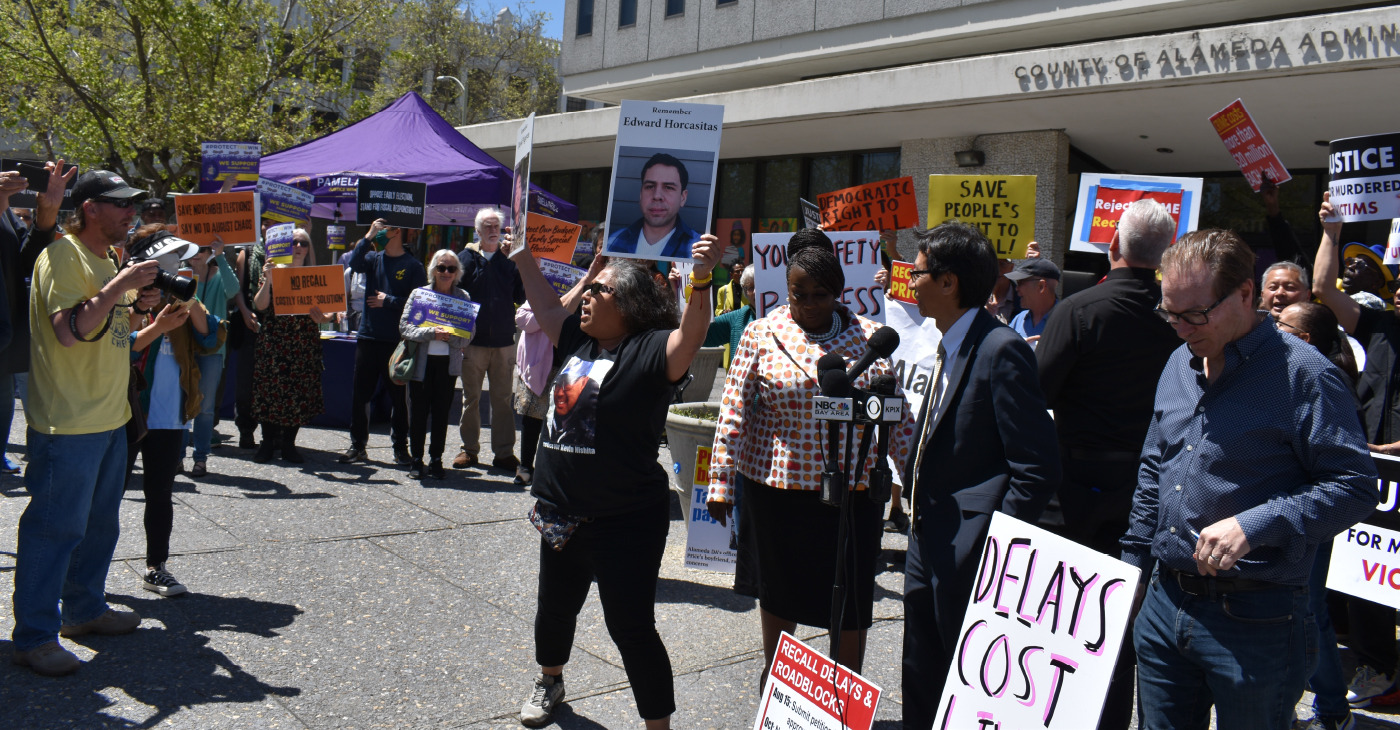Politics
CIA Director Announces Sweeping Reorganization of Spy Agency

In this Dec. 11, 2014 file photo, CIA Director John Brennan speaks during a news conference at CIA headquarters in Langley, Va. Brennan has ordered a sweeping reorganization of the spy agency, an overhaul designed to make its leaders more accountable, enhance the agencys cyber capabilities and shore up espionage gaps exacerbated by a decade of focus on counterterrorism. (AP Photo/Pablo Martinez Monsivais, File)
KEN DILANIAN, AP Intelligence Writer
WASHINGTON (AP) — Director John Brennan has ordered a sweeping reorganization of the CIA, an overhaul designed to make its leaders more accountable and close espionage gaps amid widespread concerns about the spy agency’s limited insights into a series of major global developments.
Brennan announced the restructuring to the CIA workforce on Friday, including a new directorate devoted to boosting the CIA’s computer hacking skills. He said the move comes after nine agency officers spent three months analyzing its management structure, including what deputy CIA director David Cohen called “pain points,” organizational areas where the CIA’s bureaucracy does not work efficiently.
Briefing reporters with Cohen at CIA headquarters this week, Brennan said the changes are necessary to address intelligence gaps that the CIA is not covering. He lamented that there is often no single person he can hold accountable for the spying mission in any given part of the world.
“There are a lot of areas that I would like to have better insight to, better information about, better access to,” Brennan said. “Safe havens, denied areas. Whether because we don’t even have a diplomatic presence in a country, or because there are parts of countries that have been overrun and taken over by terrorist groups and others.”
The changes come against a backdrop of evidence that the CIA’s focus on hunting and killing terrorists since the Sept. 11 attacks has led to an erosion of the espionage and analytic capabilities the agency built during the Cold War. The CIA, along with other U.S. intelligence agencies, wrongly assessed the presence of weapons of mass destruction in Iraq in 2002 and failed to anticipate the rapid collapse of Middle East governments during the Arab Spring in 2011, among other shortcomings.
The agency’s greatest public success of recent years — the 10-year effort to locate and kill Osama bin Laden in 2011 — may have taken longer than it should have, according to evidence made public in the recent Senate report on CIA interrogations. Internal CIA surveys have cited bad management and bureaucratic frustration as factors in driving talent away from the agency.
Under Brennan’s reorganization, the CIA would break down the wall between the operations and analytical arms, a system that typically has required the case officers who recruit spies and run covert operations to work for different bosses, in different offices, than analysts who interpret the intelligence and write briefing papers for the president and other policymakers.
The new plan would blend practitioners of those separate disciplines into 10 centers devoted to various subjects or areas of the world. There are a handful of such centers at the moment, including the Counter Terrorism Center, where analysts and operators have worked side by side for the last decade targeting al-Qaida with espionage and drone strikes.
Under the new plan, each center would be run by an assistant director who would be responsible for the entire intelligence mission within that jurisdiction, including covert operations, spying, analysis, liaison with foreign partners and logistics.
The system of CIA stations, headed by a CIA station chief, will remain in place, Brennan said. Most stations are in U.S. embassies, and various CIA case officers in embassies may be working on different missions for different centers.
The changes do not require congressional approval and will be undertaken within the CIA’s current budget, CIA officials said.
Critics of a blended approach have raised concerns that combining analysts with operators could compromise the objectivity of the analysts, who are tasked with coldly interpreting intelligence in which they have no stake. It may be harder for an analyst to cast doubt on a source recruited by a case officer he knows personally, the theory goes.
The head of the CIA’s operation arm retired abruptly in January after voicing concerns about the plan, say two former CIA officials who know him but spoke on condition of anonymity because they weren’t authorized to discuss internal agency matters. Brennan said the undercover officer’s decision “was not a result of this,” but he did not dispute that the officer had opposed some of the changes.
“Any time we’ve put analysts and operators together, the result has been a more powerful product,” said John McLaughlin, a former CIA analyst who became acting director, and who advised Brennan on the restructuring.
Brennan is retaining the old structure of CIA directorates. But he is changing some names, including restoring the old moniker “Directorate of Operations,” to the spying arm, the name it had before being rebadged the National Clandestine Service in 2005. For analysts, what used to be called the Directorate of Intelligence will be renamed the Directorate of Analysis. Two others, the directorates of support and science and technology, remain.
The directorates will manage human resources and set tradecraft standards, Brennan said, while the centers carry out the intelligence missions.
In another evolution, Brennan is creating a fifth directorate, the Directorate of Digital Innovation, which will focus on the new world of computer networks that has changed the way espionage is conducted. Brennan avoided the term “cyber,” a word used by the National Security Agency, the country’s premier digital spying service. The CIA’s mission of human spying now almost always has a digital component —even something so simple as backgrounding a potential asset by hacking into databases — and Brennan said the agency needs to intensify its focus on it.
The CIA will also significantly boost its leadership training and talent development efforts, which have been compared unfavorably to the military, Brennan said.
The reorganization is already drawing fire from some quarters. Paul Pillar, a former CIA analyst who famously dissented from the case for war in Iraq, expressed concern that the costs of the changes would outweigh the benefits.
“I worry that this plan may be another instance of the all-too-common pattern, among senior managers in both governmental and private sector organizations, to try to leave a personal mark by reorganizing the place,” he said in an email.
Copyright 2015 The Associated Press. All rights reserved. This material may not be published, broadcast, rewritten or redistributed.
Activism
S.F. Black Leaders Rally to Protest, Discuss ‘Epidemic’ of Racial Slurs Against Black Students in SF Public School System
Parents at the meeting spoke of their children as no longer feeling safe in school because of bullying and discrimination. Parents also said that reported incidents such as racial slurs and intimidation are not dealt with to their satisfaction and feel ignored.

By Carla Thomas
San Francisco’s Third Baptist Church hosted a rally and meeting Sunday to discuss hatred toward African American students of the San Francisco Unified School District (SFUSD).
Rev. Amos C. Brown, president of the San Francisco NAACP and pastor of Third Baptist Church, along with leadership from local civil rights groups, the city’s faith-based community and Black community leadership convened at the church.
“There has been an epidemic of racial slurs and mistreatment of Black children in our public schools in the city,” said Brown. “This will not be tolerated.”
According to civil rights advocate Mattie Scott, students from elementary to high school have reported an extraordinary amount of racial slurs directed at them.
“There is a surge of overt racism in the schools, and our children should not be subjected to this,” said Scott. “Students are in school to learn, develop, and grow, not be hated on,” said Scott. “The parents of the children feel they have not received the support necessary to protect their children.”
Attendees were briefed last Friday in a meeting with SFUSD Superintendent Dr. Matt Wayne.
SFUSD states that their policies protect children and they are not at liberty to publicly discuss the issues to protect the children’s privacy.
Parents at the meeting spoke of their children as no longer feeling safe in school because of bullying and discrimination. Parents also said that reported incidents such as racial slurs and intimidation are not dealt with to their satisfaction and feel ignored.
Some parents said they have removed their students from school while other parents and community leaders called on the removal of the SFUSD superintendent, the firing of certain school principals and the need for more supportive school board members.
Community advocates discussed boycotting the schools and creating Freedom Schools led by Black leaders and educators, reassuring parents that their child’s wellbeing and education are the highest priority and youth are not to be disrupted by racism or policies that don’t support them.
Virginia Marshall, chair of the San Francisco NAACP’s education committee, offered encouragement to the parents and students in attendance while also announcing an upcoming May 14 school board meeting to demand accountability over their mistreatment.
“I’m urging anyone that cares about our students to pack the May 14 school board meeting,” said Marshall.
This resource was supported in whole or in part by funding provided by the State of California, administered by the California State Library via California Black Media as part of the Stop the Hate Program. The program is supported by partnership with California Department of Social Services and the California Commission on Asian and Pacific Islander American Affairs as part of the Stop the Hate program. To report a hate incident or hate crime and get support, go to CA vs Hate.
Alameda County
Board of Supervisors Accepts Certification of Signatures, Will Schedule Recall Election May 14
The Alameda Board of Supervisors unanimously accepted the certification of the results of the valid signatures submitted for the recall of District Attorney Pamela Price on Tuesday evening. The Board will set the election date at a special meeting on May 14. Before the meeting, recall proponents and opponents held separate press conferences to plead their cases to the Board and residents of Alameda County.

By Magaly Muñoz
The Alameda Board of Supervisors unanimously accepted the certification of the results of the valid signatures submitted for the recall of District Attorney Pamela Price on Tuesday evening. The Board will set the election date at a special meeting on May 14.
Before the meeting, recall proponents and opponents held separate press conferences to plead their cases to the Board and residents of Alameda County.
Price, who up until this point has made little public comment about the recall, held her press conference in Jack London to announce that the California Fair Political Practices Commission has opened an investigation into the finances of the Save Alameda For Everyone (SAFE) recall campaign.
The political action committee (PAC), Reviving the Bay Area, has been the largest contributor to the SAFE organization and has allegedly donated over half a million dollars to the recall efforts.
“Between September 2023 and November 2023, [Revive the Bay Area] donated approximately $578,000 to SAFE without complying with the laws that govern all political committees in California,” Price said.
Price accused the recall campaigns of using irregular signature-gathering processes, such as paying gatherers per signature, and using misleading information to get people to sign their petitions.
SAFE held their own press conference outside of the Alameda County Administration Building at 1221 Oak St. in Oakland, once again calling for the Board to certify their signatures and set a date for the recall election.
Their press conference turned contentious quickly as Price’s “Protect the Win” supporters attempted to yell over the SAFE staff and volunteers. “Stop scapegoating Price” and “Recall Price” chants went on for several moments at a time during this event.
Families of victims urged the Board to think of their loved ones whose lives are worth much more than the millions of dollars that many opponents of the recall say is too much to spend on a special election.
The Registrar of Voters (ROV) estimates the special election could cost anywhere from $15 to $20 million, an amount that is not in their budget.
The Board was presented with several options on when and how to conduct the recall election. They have to set a date no less than 88 days or more than 125 days after May 14, meaning the date could fall anywhere from late July to September.
But the County charter also states that if a general election takes place within 180 days of their scheduling deadline, the Board could choose to use the November ballot as a way to consolidate the two events.
In the event that Price is recalled, the Supervisors would appoint someone to fill the vacancy, though neither the County nor the California charter specifies how long they would have to pick a replacement.
The appointee would serve as district attorney spot until the next election in 2026. Afterwards, either they, if they run and win, or a newly elected candidate would serve the rest of Price’s six-year term until 2029. Price is unique as the only district attorney wo serves a term of six years.
The Board acknowledged that they knew last fall that this recall would come with its own set of complications when Measure B, which changed the local recall charter to match California’s, was first brought to their consideration.
Supervisors Nate Miley and David Haubert opposed discussing the measure, stating that the public would think that the Board was attempting to influence the recall campaign that had already taken off months prior.
“I think ultimately this feels like it’s going to end up in court, one way or the other, depending on who files what,” Haubert said.
Price’s legal team told the Post that the district attorney intended to consider all legal options should the recall election take place.
Miley stated that while he was in support of the amendment to the charter, he did not think it was right to schedule it for the March ballot as it would ultimately cause confusion for everyone involved.
“It has produced some legal entanglements that I think, potentially, could’ve been avoided,” Miley said.
Commentary
Opinion: Lessons for Current Student Protesters From a San Francisco State Strike Veteran
How the nation’s first College of Ethnic studies came about, bringing together Latino, African American and Asian American disciplines may offer some clues as to how to ease the current turmoil on American college campuses over the Israel-Hamas war. After the deadline passed to end the Columbia University encampment by 2 p.m. Monday, student protesters blockaded and occupied Hamilton Hall in a symbolic move early Tuesday morning. Protesters did the same in 1968.

By Emil Guillermo
How the nation’s first College of Ethnic studies came about, bringing together Latino, African American and Asian American disciplines may offer some clues as to how to ease the current turmoil on American college campuses over the Israel-Hamas war.
After the deadline passed to end the Columbia University encampment by 2 p.m. Monday, student protesters blockaded and occupied Hamilton Hall in a symbolic move early Tuesday morning.
Protesters did the same in 1968.
That made me think of San Francisco State University, 1968.
The news was filled with call backs to practically every student protest in the past six decades as arrests mounted into hundreds on nearly two dozen campuses around the country.
In 1970, the protests at Kent State were over the Vietnam War. Ohio National Guardsmen came in, opened fire, and killed four students.
Less than two weeks later that year, civil rights activists outside a dormitory at Jackson State were confronted by armed police. Two African American students were killed, twelve injured.
But again, I didn’t hear anyone mention San Francisco State University, 1968.
That protest addressed all the issues of the day and more. The student strike at SFSU was against the Vietnam war.
That final goal was eventually achieved, but there was violence, sparked mostly by “outside agitators,” who were confronted by police.
“People used the term ‘off the pigs’ but it was more rally rhetoric than a call to action (to actually kill police),” said Daniel Phil Gonzales, who was one of the strikers in 1968.
Gonzales, known as the go-to resource among Filipino American scholars for decades, went on to teach at what was the positive outcome of the strike, San Francisco State University’s College of Ethnic Studies. It’s believed to be the first of its kind in the nation. Gonzales recently retired after more than 50 years as professor.
As for today’s protests, Gonzales is dismayed that the students have constantly dealt with charges of antisemitism.
“It stymies conversation and encourages further polarization and the possibility of violent confrontation,” he said. “You’re going to be labeled pro-Hamas or pro-terrorist.”
That’s happening now. But we forget we are dealing not with Hamas proxies. We are dealing with students.
Gonzales said that was a key lesson at SF State’s strike. The main coalition driving the strike was aided by self-policing from inside of the movement. “That’s very difficult to maintain. Once you start this kind of activity, you don’t know who’s going to join,” he said.
Gonzales believes that in the current situation, there is a patch of humanity, common ground, where one can be both pro-Palestine and pro-Israel. He said it’s made difficult if you stand against the belligerent policies of Benjamin Netanyahu. In that case, you’re likely to be labeled antisemitic.
Despite that, Gonzales is in solidarity with the protesters and the people of Gaza, generally. Not Hamas. And he sees how most of the young people protesting are in shock at what he called the “duration of the absolute inhumane kind of persecution and prosecution of the Palestinians carried out by the Israeli government.”
As a survivor of campus protest decades ago, Gonzales offered some advice to the student protesters of 2024.
“You have to have a definable goal, but right now the path to that goal is unclear,” he said.
About the Author
Emil Guillermo is a journalist and commentator. A veteran newsman in TV and print, he is a former host of NPR’s “All Things Considered.”
-

 Community3 weeks ago
Community3 weeks agoFinancial Assistance Bill for Descendants of Enslaved Persons to Help Them Purchase, Own, or Maintain a Home
-

 Activism4 weeks ago
Activism4 weeks agoOakland Post: Week of April 3 – 6, 2024
-

 Business3 weeks ago
Business3 weeks agoV.P. Kamala Harris: Americans With Criminal Records Will Soon Be Eligible for SBA Loans
-

 Activism3 weeks ago
Activism3 weeks agoOakland Post: Week of April 10 – 16, 2024
-

 Community3 weeks ago
Community3 weeks agoAG Bonta Says Oakland School Leaders Should Comply with State Laws to Avoid ‘Disparate Harm’ When Closing or Merging Schools
-

 Community2 weeks ago
Community2 weeks agoOakland WNBA Player to be Inducted Into Hall of Fame
-

 Community2 weeks ago
Community2 weeks agoRichmond Nonprofit Helps Ex-Felons Get Back on Their Feet
-

 Community2 weeks ago
Community2 weeks agoRPAL to Rename Technology Center for Retired Police Captain Arthur Lee Johnson














































